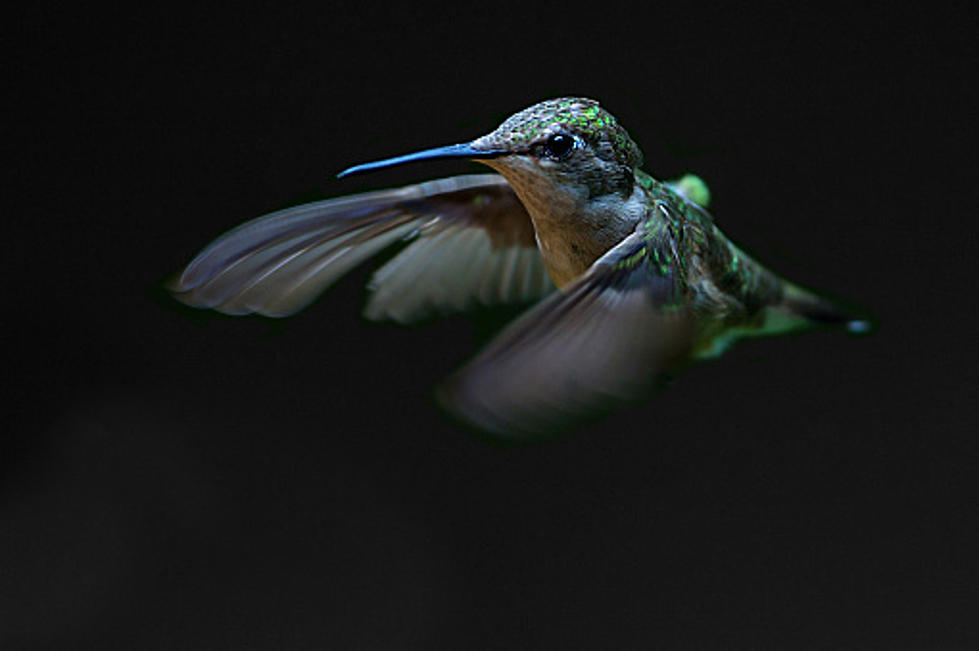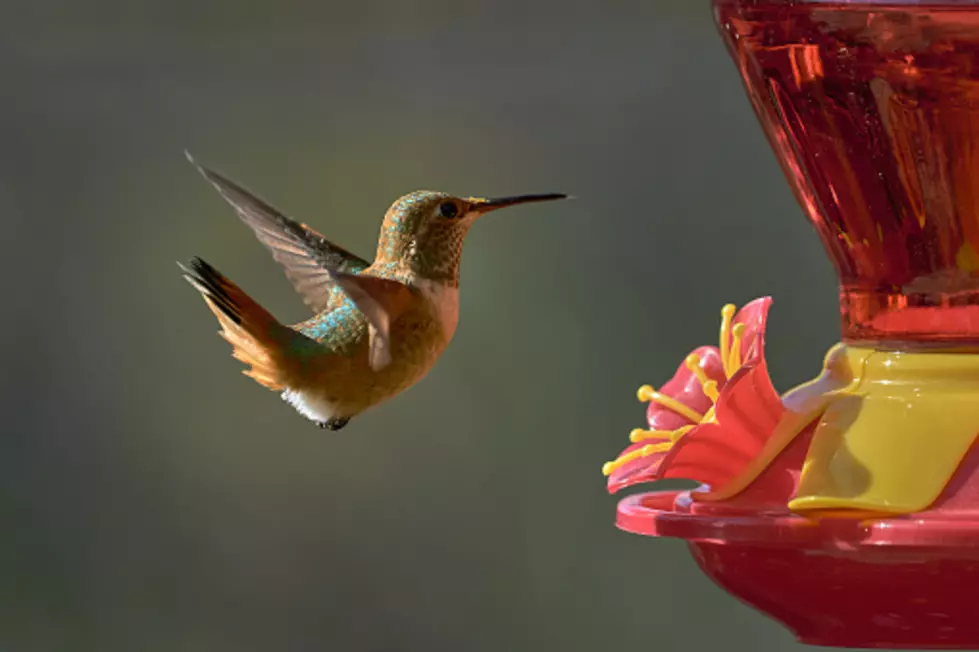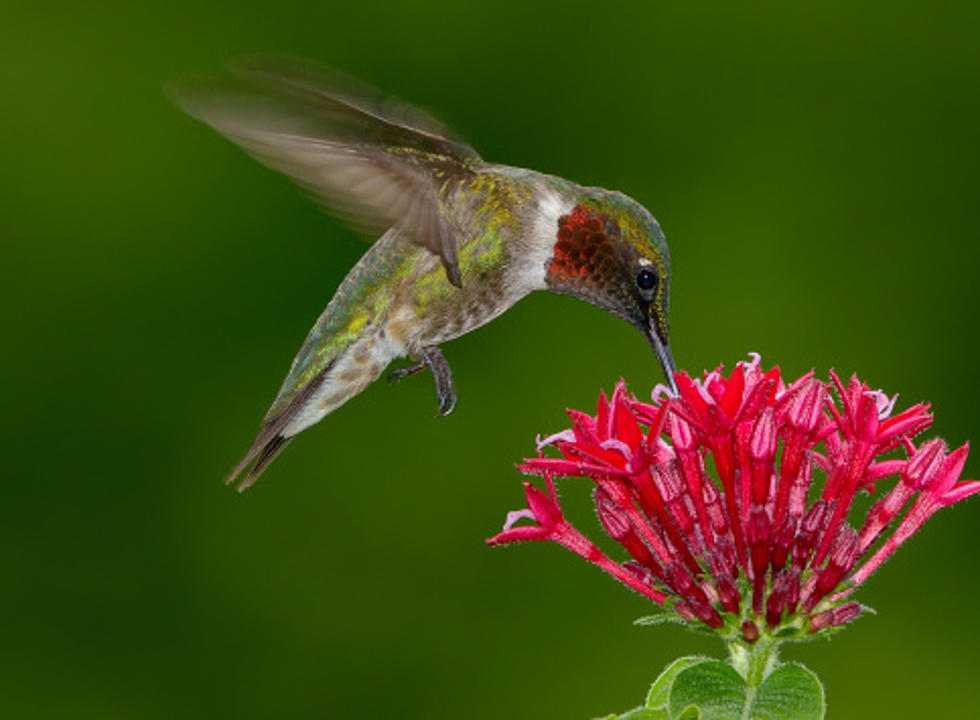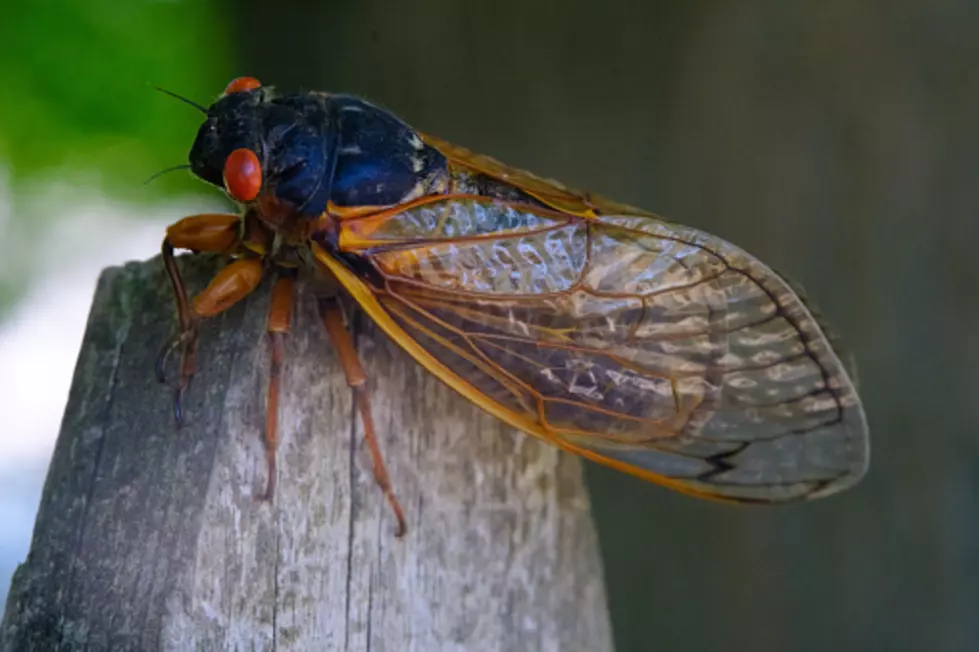
Hummingbirds Are Back In Illinois, Here’s How To Attract Them
As a hummingbird fan, I was delighted to read last weekend that over the last week, migrating hummingbirds, making the long trek from their winter homes in Mexico, have made it into Illinois.
Some are heading farther north, going into Wisconsin, Minnesota, and on into Canada, while others are going to stay behind and spend their summers with us here in the Land of Lincoln. The main two species that will be around here are the ruby-throated hummingbird, and the Rufous hummingbird.
Let's talk about how you can convince them that your yard is the summer resort they've been looking for.
The Hummingbird Experts Out There Say Mid April Is When We Usually See Hummingbirds In The Rockford Area
Since migrating hummingbirds fly by day so they can see flowers on the ground and take their breaks during the overnight, it does take a little while before they get here. If you've always wanted to make your yard one of their pit stops, you should think about putting out your hummingbird feeder(s) around the 1st of April--but don't worry if you didn't do that, there's still time.
Many Hummingbirds Spend Their Winters In Central America Mexico, But When February Comes, They Go
Unlike other birds that make the migration trip together, hummingbirds do it solo. They fly alone, often on the same path they took earlier in their life, and they really fly low, just above tree tops or water. Young hummingbirds have to learn as they go, because they navigate without parental guidance.
During migration, a hummingbird's heart beats up to 1,260 times a minute, and its wings flap 15 to 80 times a second. Research indicates a hummingbird can travel as much as 23 miles in one day. However those that make the 500 mile flight from Florida to the Yucatan do it in 18-22 hours non-stop, depending on wind conditions.
If You're Looking To Make Your Yard A Hummingbird Haven, Here's What To Do
I'd start with a feeder like the one you see the hummingbird sitting on in the photo above. Better yet, get yourself several of them. The more feeders, the more hummingbirds.
Here are some tips, courtesy of BirdAdvisors.com:
- Provide more hummingbird feeders and spread them around your yard to create more territories.
- Ensure you clean and change the hummingbird nectar regularly. You can either buy nectar or make your own, but don’t use any with red dye.
- Provide a water feature such as a birdbath fountain or stream. Ensure that the water is clean and not stagnant.
- Grow native plants that will provide food such as salvias, fuschias, trumpet creeper, lupin, columbine, bee balms, and foxgloves.
- Don’t use pesticides and herbicides as these may be toxic to birds.
- Provide small perches of thin branches bare of leaves for hummingbirds to rest.
If you don't want to go to the trouble of putting up your own feeders and things, but still want to see hummingbirds, check out this live feed:
LOOK: Stunning animal photos from around the world
More From WROK 1440 AM / 96.1 FM









